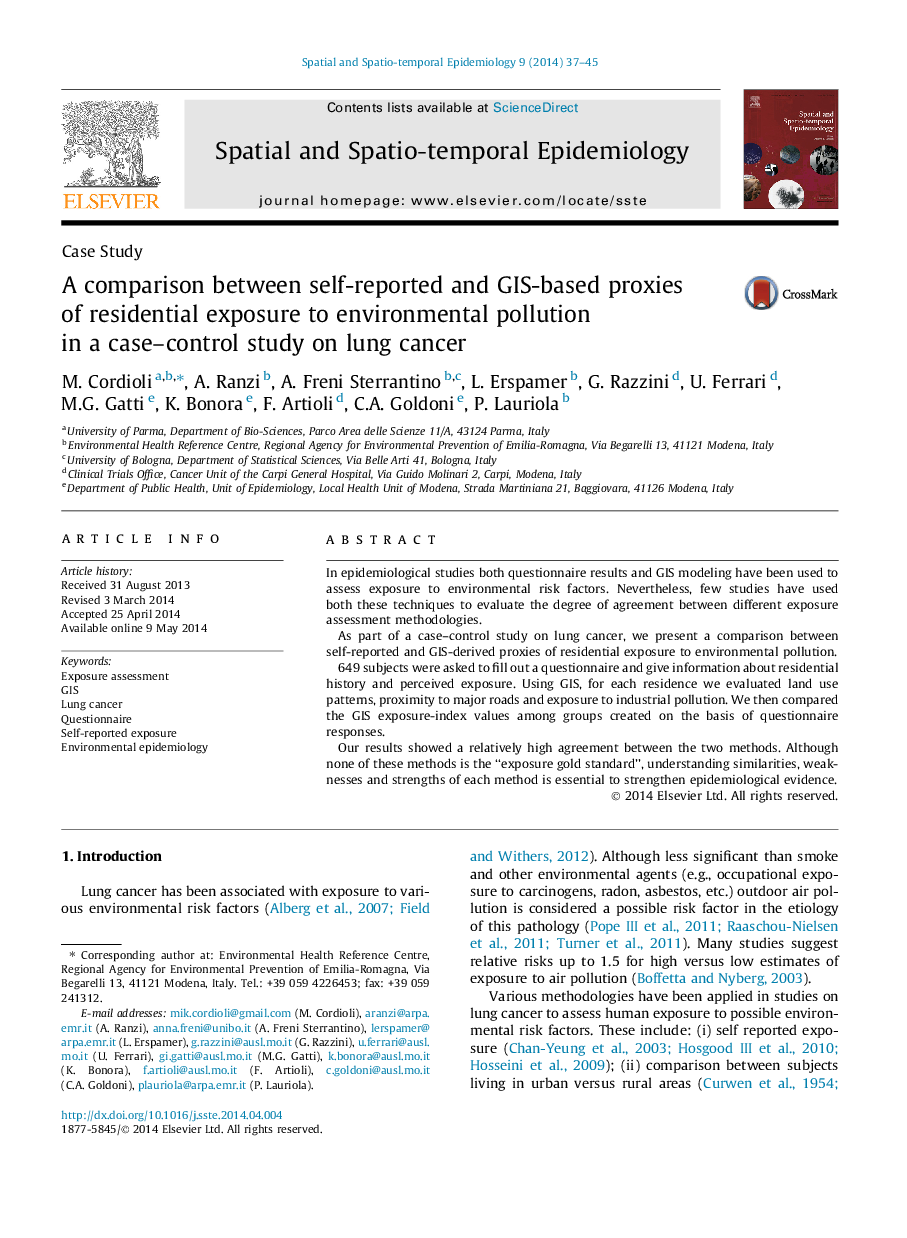| Article ID | Journal | Published Year | Pages | File Type |
|---|---|---|---|---|
| 1064332 | Spatial and Spatio-temporal Epidemiology | 2014 | 9 Pages |
•We compared self-reported and GIS-derived proxies of exposure to air pollution.•We collected information on land use, road traffic and industrial pollution.•We found a relatively high overall agreement between results of the two methods.•Using multiple exposure assessment tools is essential to strengthen epidemiological evidence.
In epidemiological studies both questionnaire results and GIS modeling have been used to assess exposure to environmental risk factors. Nevertheless, few studies have used both these techniques to evaluate the degree of agreement between different exposure assessment methodologies.As part of a case–control study on lung cancer, we present a comparison between self-reported and GIS-derived proxies of residential exposure to environmental pollution.649 subjects were asked to fill out a questionnaire and give information about residential history and perceived exposure. Using GIS, for each residence we evaluated land use patterns, proximity to major roads and exposure to industrial pollution. We then compared the GIS exposure-index values among groups created on the basis of questionnaire responses.Our results showed a relatively high agreement between the two methods. Although none of these methods is the “exposure gold standard”, understanding similarities, weaknesses and strengths of each method is essential to strengthen epidemiological evidence.
